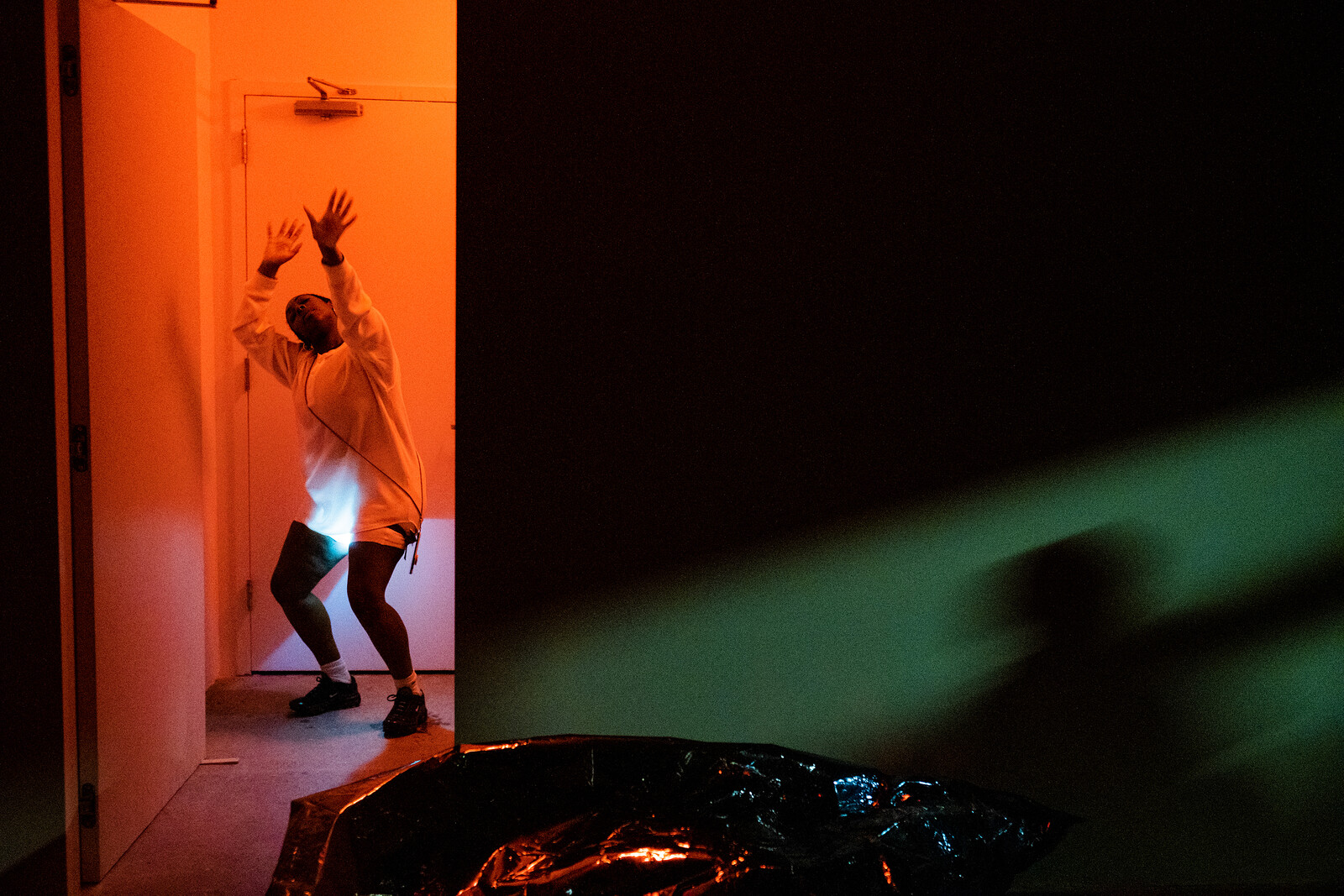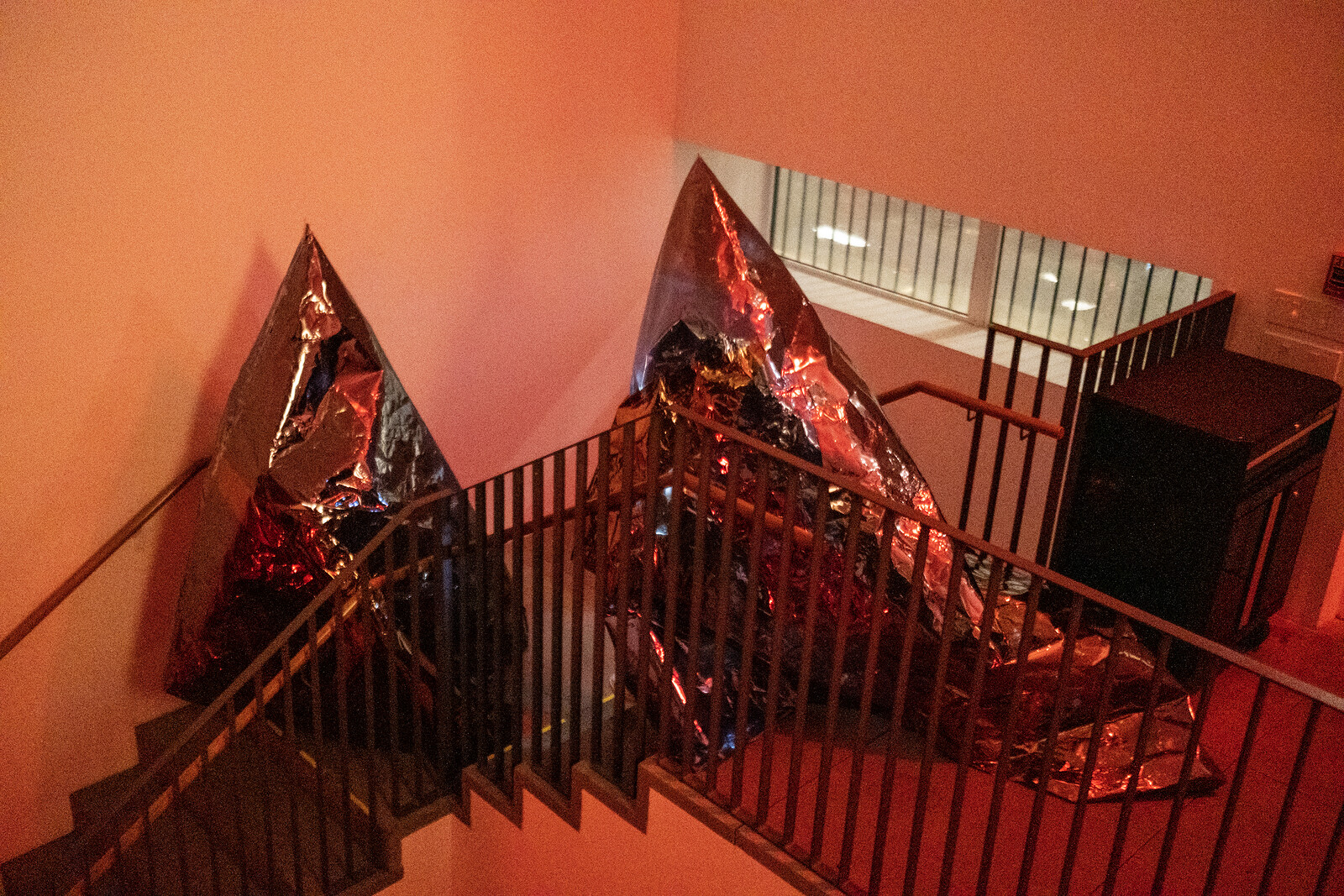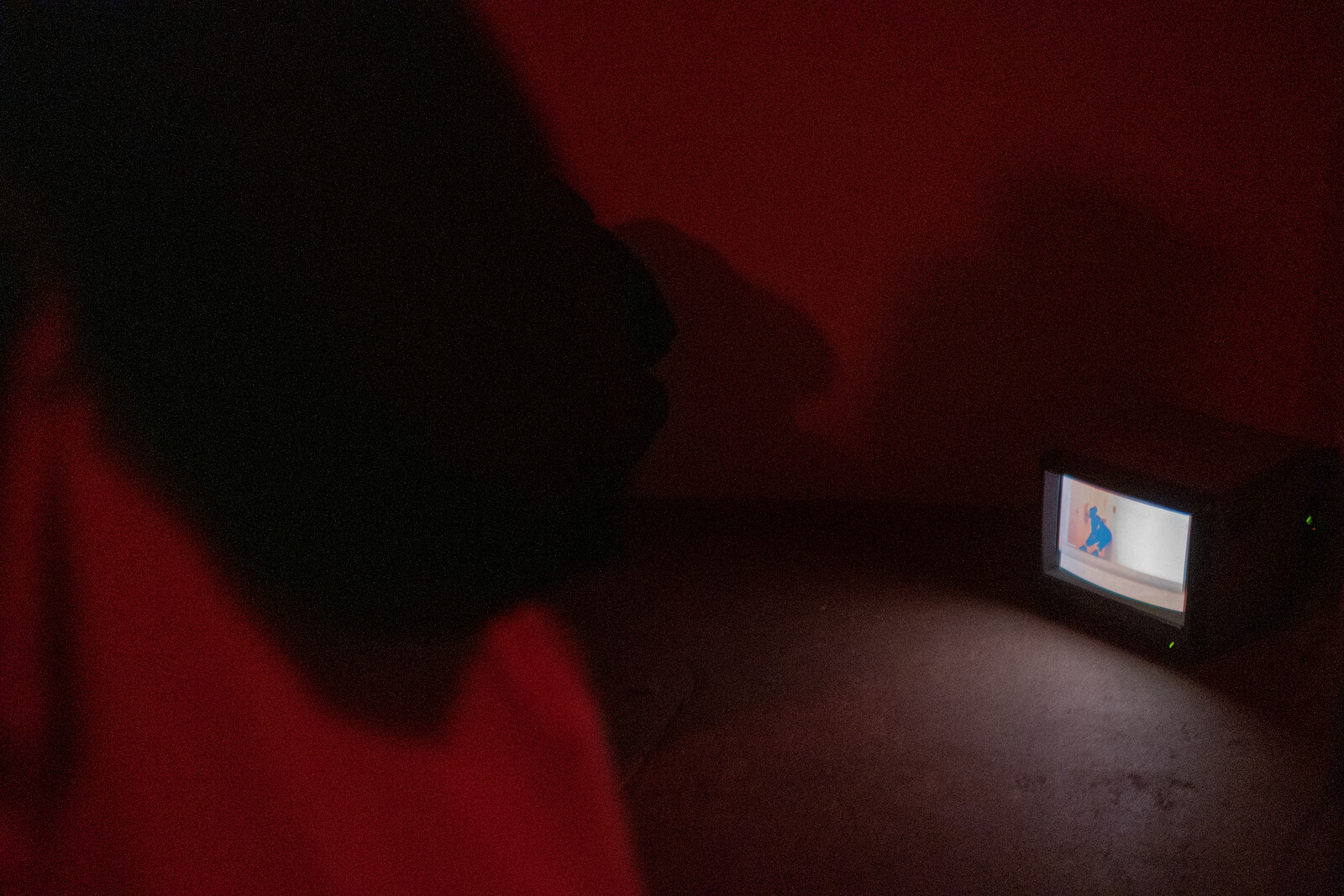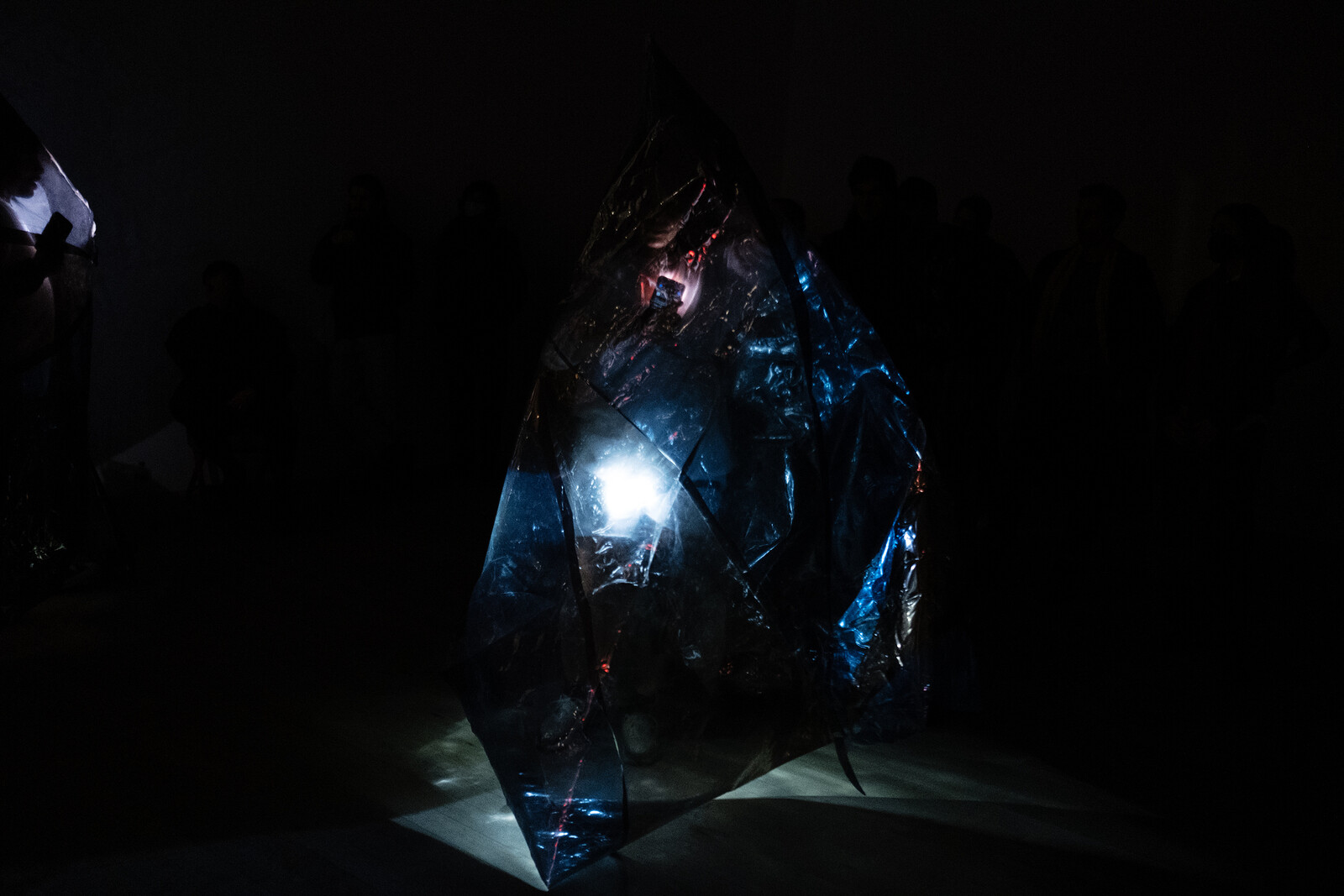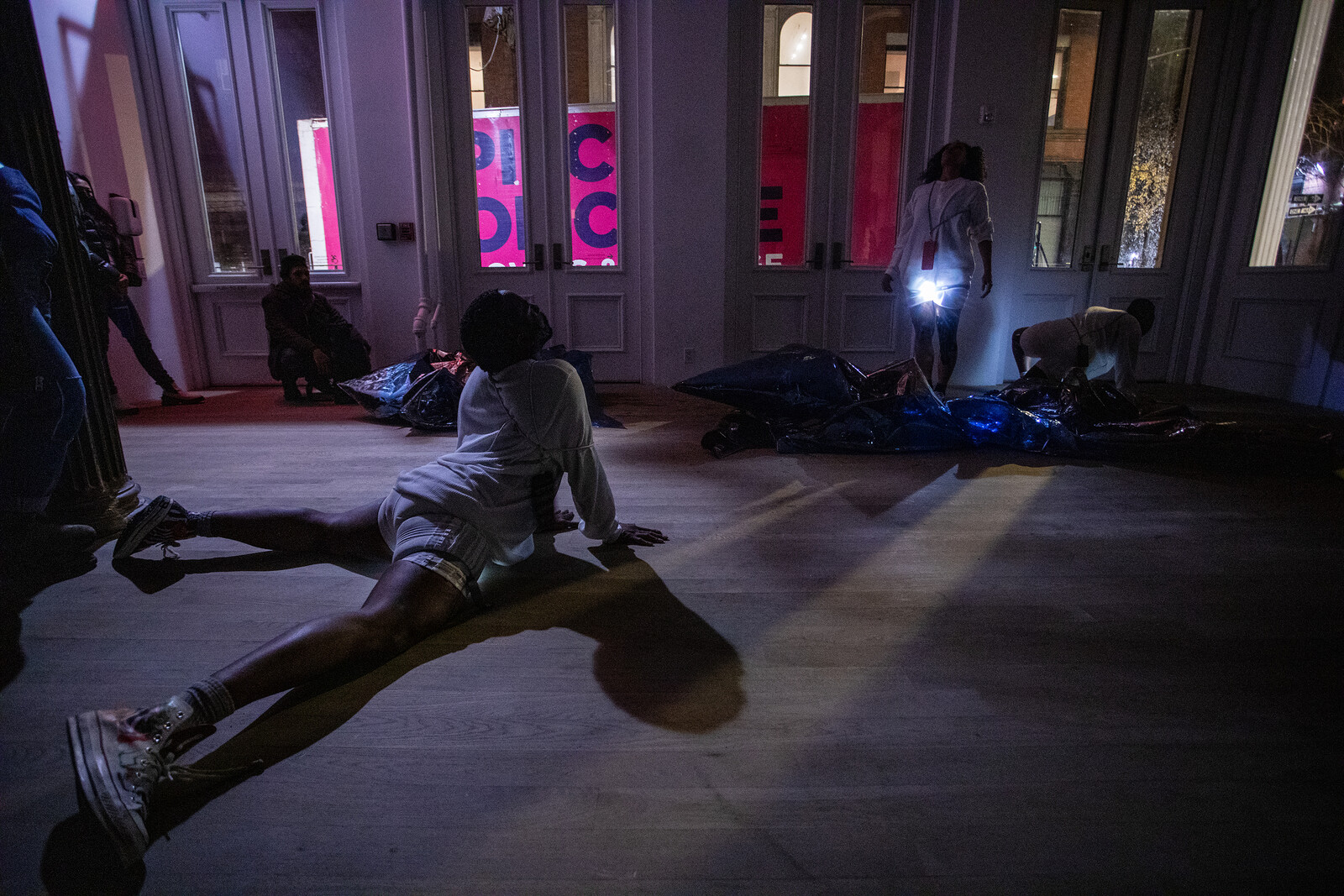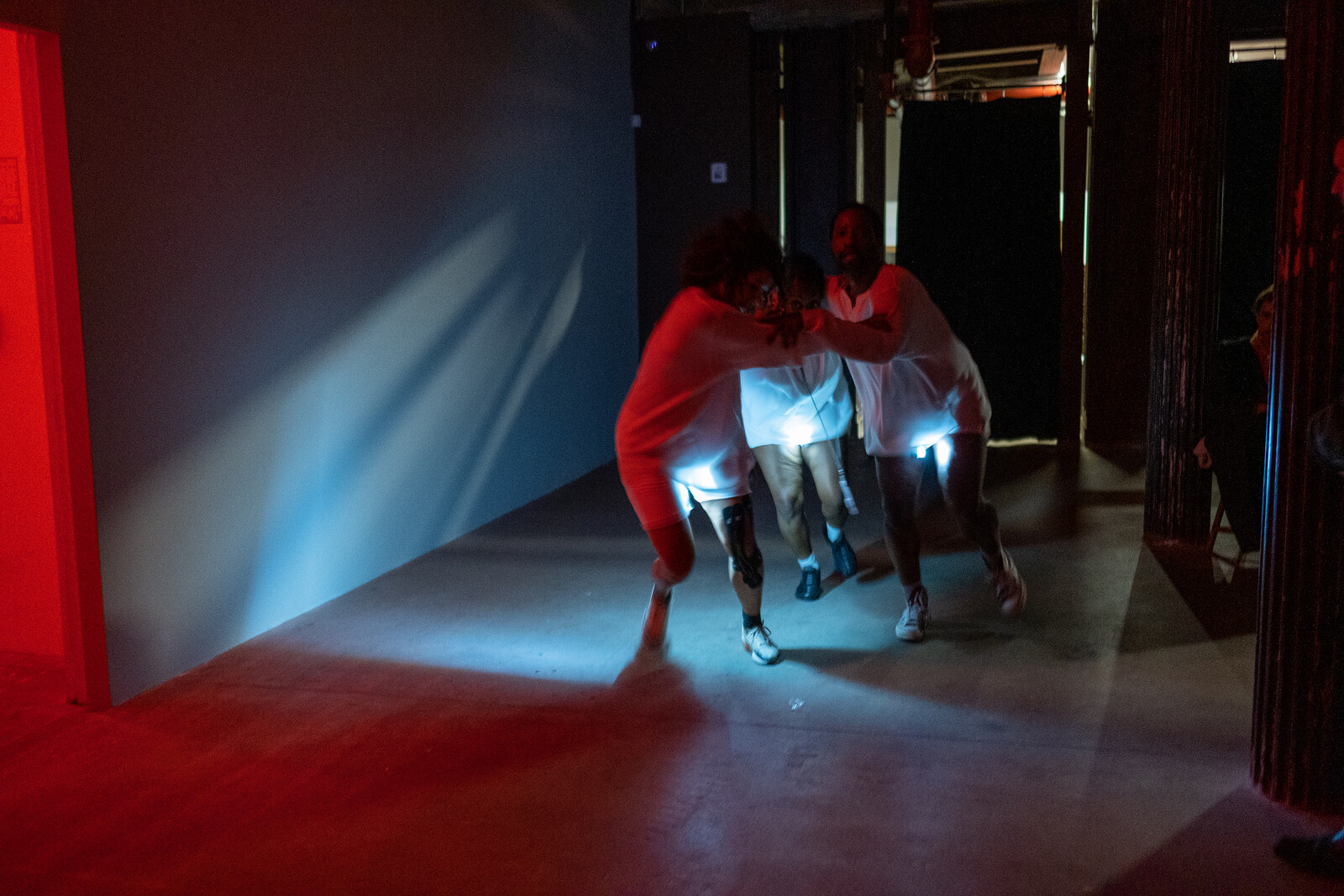keyon gaskin, Zinzi Minott, and Moya Michael weren’t just stalling. Barely visible beneath their semi-opaque hooded cloaks, and positioned at various points around the entrance to Artists Space, they outlined the terms of their performance clearly: “Once we get moving feel free to roam around the space. We will be all over the place … We might get close to you … Keep your hands to yourself … Be mindful, be careful … We’re at work.” We “waited” for things to start—though, of course, they already had.
gaskin—an artist living in Portland, Oregon who performs both solo and in movement-based groups—has frequently made active audience engagement a feature of their pieces, eschewing passive consumption of black and queer performance by primarily white audiences. At the first performance commission held across Artists Space’s 8,000 square feet, audience-performer interactions were diffuse in part because of the building’s size—the performance took place over several rooms, and not all of it could be witnessed simultaneously. Visibility, its trappings and attendant politics, were not so much withheld as decentered. “We can’t see everything,” gaskin and their collaborators cautioned at the start, implying that neither should we. “Remember, this is a performance, but not your performance. It ain’t your show.”
What unfolded over the hour-and-a-half, untitled piece, then, can only be recounted in fragments, in elliptical images made of light and movement. Having launched into action, the trio made its way downstairs, gathering in the vestibule whose encircling walls refracted rays of light from little lamps nestled between each dancer’s thighs and iPhones hung around their necks. Their lean, huddle, and slow swirl formed a sonic sculpture as each shift generated noisy rustling until stasis meant silence.
Such moments of congregation were initially scarce. In between, the dancers inhabited distinct spaces bathed in the crepuscular glow from street lamps or red exit signs. Minott selected a reggae song from an iPhone playlist, then danced until the heavy bassline phased out. At the end of the solo, as if emerging from a trance, she beat her fists against the wall and cried out with words and bird calls, waiting for the others to reciprocate. Through this play of echolocation, repeated several times throughout the performance, the dancers formulated a private language—to mark time, warn of danger, and find each other across distance and darkness. It also allowed them to wade through an audience whose presence, it seemed, became increasingly more incidental to, if not intrusive on, the dancers’ collective project.
At other moments the choreography attended to its architectural frame. Upstairs, Michael scaled the walls, feeling and groping at their surfaces. In the main gallery, gaskin crawled on the ground and into corners, gripping the columns or challenging their classical foundations by lying snuggly between a column and a wall. The artist later opened a window and jumped out, vanishing from sight. If much of the performance consisted of testing and reaffirming the building’s structural elements and limits through direct body contact, it also centered such acts of disappearance, keeping tabs—as if for future reference and planning—of emergency exits. In the final act, the dancers regrouped in the main gallery upstairs. They opened the sidewalk-facing doors, letting the brisk air and street light rush in all at once and running figure eights as they whirled in and out of each doorframe.
Then a frenetic energy entered the room. gaskin opened the Cortland Alley door, standing in its frame as if on the lookout. Shutting it abruptly, they cleared a sightline along a row of columns by gesturing to the audience to recede toward the edges of the room, revealing the inattentive or stubborn bystanders who became obstructions to the impending activity. Moments such as this—heightening audiences’ awareness of their own physical placement in relation to roaming performers—has led to confrontation in past performances. Here, however, gaskin’s “stage direction” brought in a new dynamic of viewing that resisted confrontation of the kind that is often subsumed into the experience economy of “participatory” art. With cloaks off, the performers embraced spontaneous, unpredictable routes. We had only to stand back or get out of the way. Minott and Michael hid behind columns as gaskin shifted around their own post to spot them.
This high-adrenaline peek-a-boo was dispelled in a mad rush as they darted throughout the space in a game of tag that took bodies in the room as decoys or obstacles to capture—pawns in the game. Scurrying gleefully downstairs, elated and gasping for air, the trio reunited and laughed, coughed, and moaned as they held each other by the arms in a huddle. Then they took the elevator back up to a crowd on pause, picked up an iPhone in the front office, and played the song “Board Up” by the black, queer, trans punk band Fuck U Pay Us, which repeats the line: “People over property.” The room lights came back on. Someone called out: “That’s it.”

